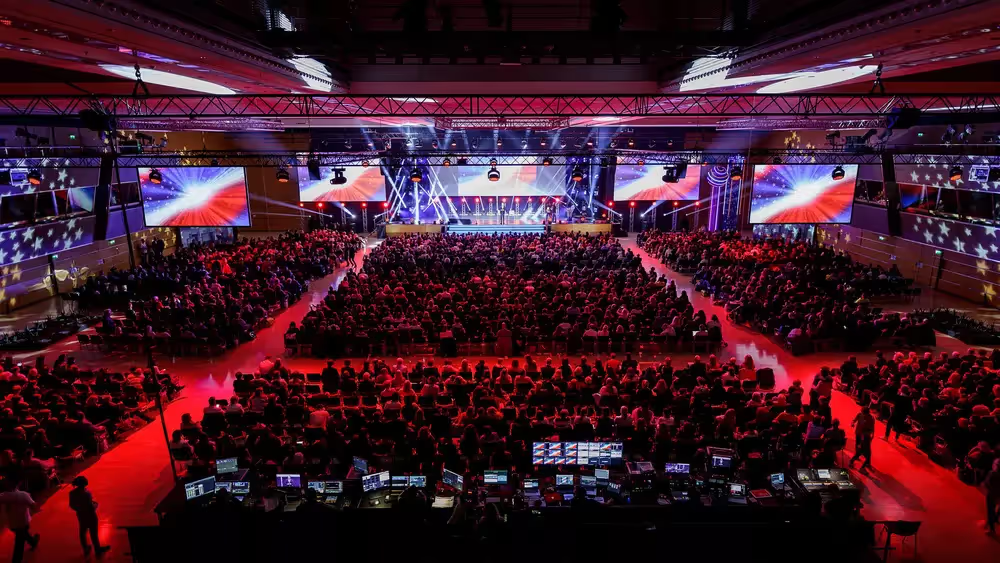What are KPIs?
A unique event experience is definitely a good basis for the success of event marketing. However, what makes for a unique event experience is often subjective for each individual participant and is therefore difficult to quantify. KPIs help to counteract this situation. KPIs, so-called key performance indicators, are measures to make the performance of event marketing measurable. In addition, KPIs serve as a clue to measure the impact of improvement measures within event marketing.
Thanks to the use of event management software, KPIs are available at any time and thus help to provide a real-time overview.
How are KPI selected?
The selection of relevant KPIs depends on the goals of the organisation and the associated event marketing measures. Event marketing can contribute to various goals of an organisation. Possible goals of event marketing are:
- Generation of new contacts
- Increasing customer loyalty
- Increasing awareness of an organisation, brand, service or product — building and expanding specific communities and networks
- Information transfer
An overview of the most important KPIs for marketing events
As a rule, events already have a target group that is initially made aware of the upcoming event by means of an invitation. Invitations are often sent by post. Physical invitations have the advantage of haptic perception, but there are numerous disadvantages when it comes to measurable event marketing, such as limited information about successful delivery or no measurability of the opening rate.
It is therefore recommended to send event invitations electronically via email. Event invitations via email delivery make it possible to measure the opening rate, which is calculated as follows:
Opening rate in% = (Unique openings/ (number of recipients — bounces)) * 100
In order to increase the opening rate, it is recommended to make the subject line appealing, as well as to use your own email sender address, which is known to recipients at best.
Sign up rate
In many ways, the registration rate is a key value for event success. The higher the registration rate, the fewer invitations are required for the desired number of participants. The filing rate is calculated as follows:
Enrollment rate in% = (number of registrations/ number of invitations) * 100
Whether a recipient decides to register after opening an invitation depends on various factors. Of course, there are always recipients who are simply prevented from attending the event date or for whom the event content is irrelevant. For everyone else, however, a simple and quick registration process is central.
Response rate
The answer room provides information about the relevance of an event within a target group. The higher the relevance of an event is for a recipient, the more willing they are to provide an answer. For example, the recipient may be prevented from attending the event date, but would definitely like to be invited back for a next edition. As an event manager, a 100% response rate would be desirable, after all, an event invitation is always something personal. In order to be able to measure the response rate, it must be possible for invitation recipients to provide an answer for both participation and non-participation (unsubscription). The response rate is then broken down as follows:
Response rate in% = ((number of registrations + number of cancellations))/number of invitations) * 100
In addition to good invitation communication, the event content and the relationship between event organisation and invitation recipient are therefore also decisive for the response rate.
No show rate
The no-show rate is the key figure for every event manager. It reflects the number of participants who attended the event in relation to the number of registrations. It is so central because by collecting this key figure, the planning of the catering, the size of the location and all other costs associated with participants can be planned. A high no-show rate can result in very high and unnecessary costs at any event. The key figure is calculated as follows:
No show rate in% = (number of non-participants/number of registrations) * 100
Free events in particular tend to have a higher no-show rate because there is less commitment. It is therefore advisable to systematically collect this key figure and incorporate it into event planning.
Net Promoter Score (NPS)
The Net Promoter Score indicator is widely used to measure customer satisfaction. A Net Promoter Score can also be collected for events by surveying the satisfaction of event participants after a successful event. The Net Promoter Score is calculated with a simple question:
“On a scale of 1-10, how likely is it that you would recommend this event?”
Values of 9-10 are considered “promoters” who were enthusiastic about the event and are very likely to tell other people about it as well.
Values of 7-8 are considered “passives” who are satisfied participants but will only tell a few about the event experience.
Values between 0 and 6 are considered “rejectors” who had a negative event experience and could even damage the brand with poor reviews.
The NPS is calculated as follows:
% Supporter -% Rejector = NPS
This value is an important indicator of event success and helps to continuously measure continuous improvement of the event. In addition, the change in the NPS can also provide information about future events. The changes in NPS can provide information about, for example, how the other key figures could develop in the future and thus improve event planning.
In addition to interviewing the NPS, it is recommended to ask event participants further questions, such as general suggestions for improvement or desired future event content.
Efficient event marketing with continuous improvement
Anyone who wants to professionalise and constantly improve their event marketing must collect and constantly monitor their key figures and derive insights and measures from them. To simplify this, it is recommended to use professional event management software.




















.svg)















































































